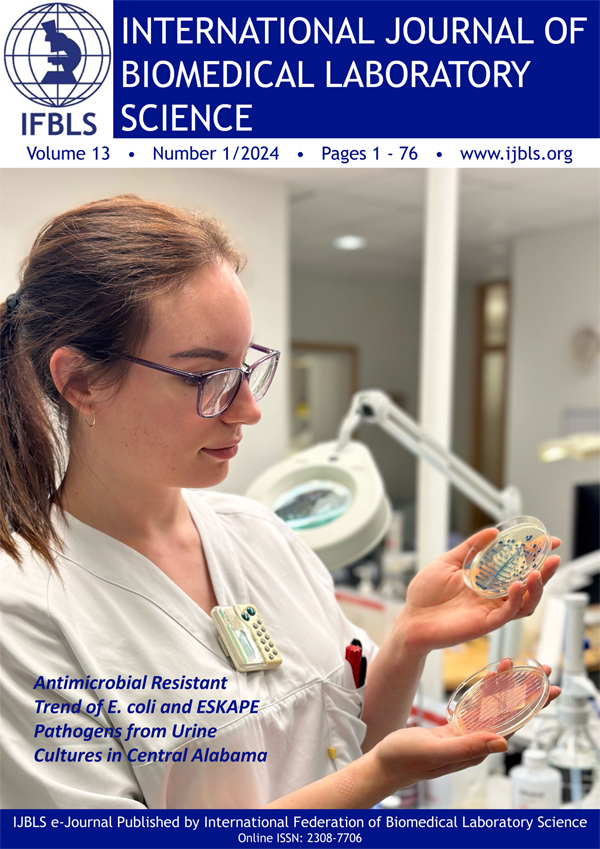Abstract
Background: The incidence of diabetes mellitus round the globe is escalating remarkably. Diabetes mellitus has some deleterious effects on the genitourinary system and render diabetic patients more vulnerable to UTI. Objective: This study was undertaken to determine the prevalence of UTI among diabetic patients, the causative pathogens & their antimicrobial susceptibility pattern. Materials and Methods: Urine culture & sensitivity test reports data of 462 diabetic patients who had visited the B.P.Koirala institute of health sciences during a five year period, from February 2008 to January 2012, were retrospectively reviewed from log & register book and also from laboratory software( Q-Lab). These data were analyzed statistically using Microsoft Excel 2007.Results: The overall prevalence of UTI was 54.76% with female preponderance of 67.98 % and in case of male it was 32.02%. The UTI was common in age group between 31-40 yrs. The most predominant bacterial isolates were Escherichia coli, Klebsiella pneumonia, Proteus mirabilis and Enterococcus. In-vitro antimicrobial susceptibility tests revealed that Amikacin was more effective against Gram negative pathogens where as Nitrofurantion was sensitive to Gram positive pathogens. Ampicillin, nalidixic acid and ciprofloxacin were poorly effective against isolated uropathogens. Conclusions: This study highlights that the prevalence of UTI among diabetics is considerably high and the responsible pathogens have developed resistance to several potent antibiotics which if not looked into timely, there is every chance that we will be left with no choice in near future. Therefore, it is highly recommended that periodic screening of diabetic patients should be done for optimal therapy and
management.
Key words: UTI, diabetes, bacteria, antimicrobial susceptibility
Prevalence of Uropathogens in Diabetic Patients and Their Susceptibility Pattern at a Tertiary Care Center in Nepal-A Retrospective Study


